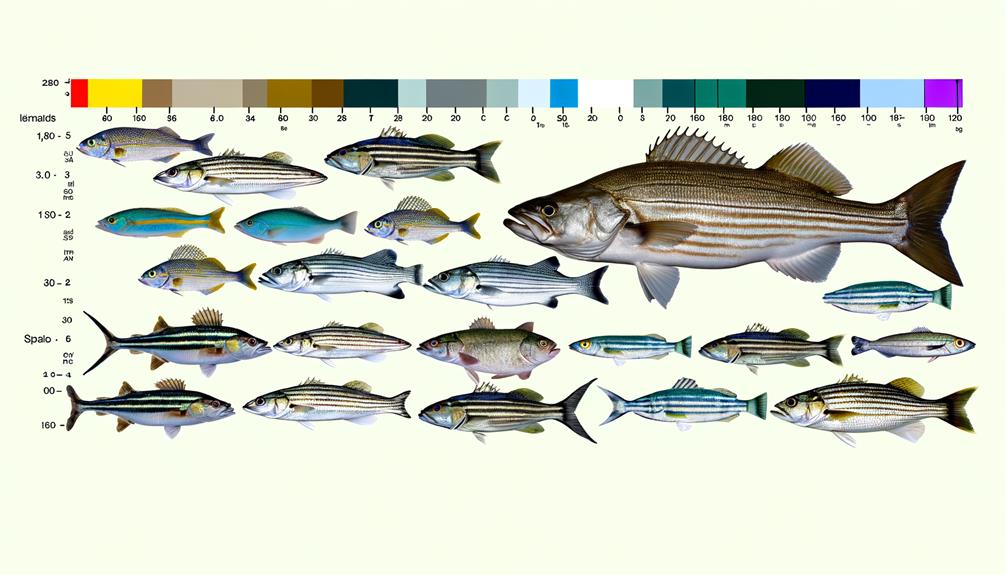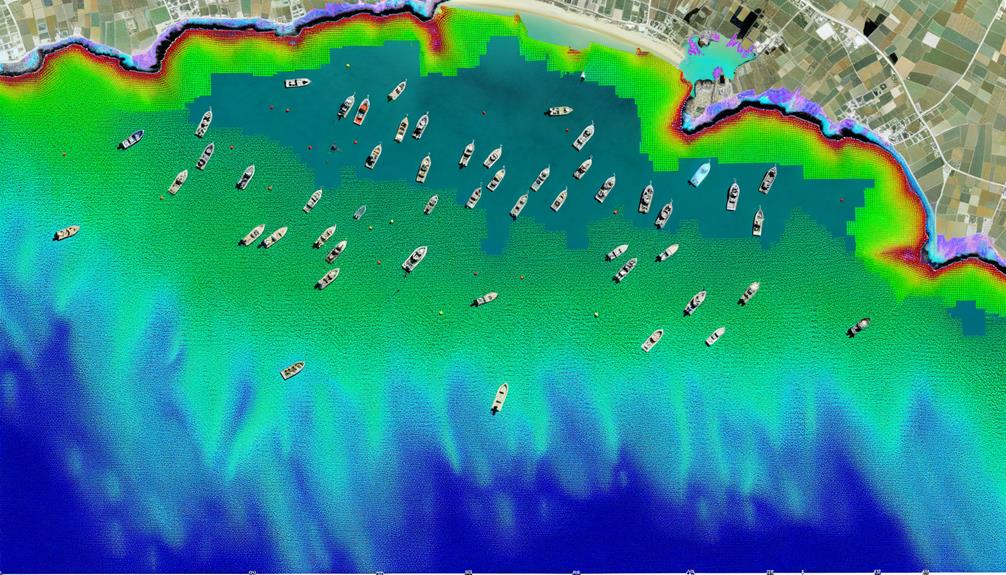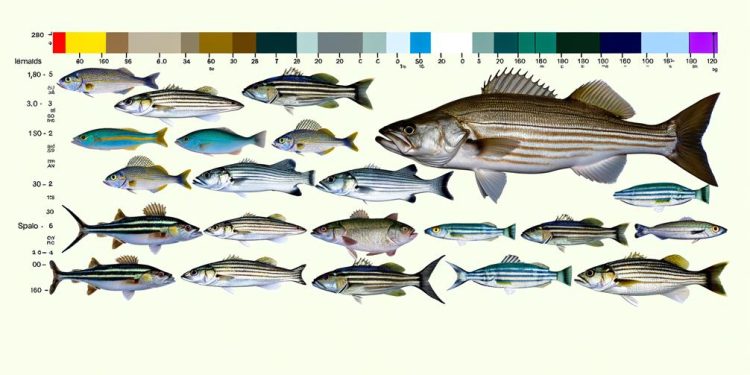Rhode Island Saltwater Fishing Regulations
Rhode Island’s saltwater fishing regulations encompass a gamut of rules, such as size, season, and possession limits. These regulations are crucial for sustainable fishing practices and cover not only common fish species but also extend to lobsters, crabs, shellfish, and other marine organisms. They underscore the state’s commitment to preserving its rich marine biodiversity.
It is important for both recreational and commercial fishermen to understand and adhere to these guidelines. However, navigating these extensive regulations can sometimes be complex. Let’s discuss and decipher these guidelines together to ensure we are all contributing to the preservation of our marine resources.
Key Takeaways
- Rhode Island’s fishing regulations encompass size, season, and possession limits for various marine species, ensuring sustainable practices.
- Essential gear for fishing includes rods, lures, safety equipment like life jackets, and accessories for organization.
- Specific limits exist for marine species such as Black Sea Bass, Bluefish, and Lobsters, aimed at preserving marine biodiversity.
- Staying informed about regulation changes via reliable sources like the RIDEM website and newsletters is crucial for compliance and sustainable fishing.
Understanding Rhode Island’s Fishing Regulations
In order to ensure sustainable fishing practices, Rhode Island has set forth specific regulations including size, season, and possession limits for various fish species. Understanding these rules is crucial for the protection of breeding populations and prevention of overfishing. These regulations play a pivotal role in maintaining the health of local ecosystems and supporting the long-term viability of marine resources.
Size limits are imposed to protect juvenile fish and safeguard the breeding populations. Season limits, on the other hand, are designed to prevent overfishing during critical breeding or spawning periods. Possession limits control the quantity of fish that an angler can keep or possess at any given time.
Equally important are equipment regulations which dictate the types of gear allowed and aim to promote fair and ethical fishing practices among anglers. Violations of these fishing regulations can result in fines and penalties, thereby emphasizing the importance of responsible fishing.
Adherence to Rhode Island’s fishing regulations not only ensures the sustainability of the state’s marine resources but also fosters a sense of belonging among anglers in the collective effort to prevent overfishing.
Essential Saltwater Fishing Gear
Having understood the importance of adhering to Rhode Island’s fishing regulations, it is equally vital to equip oneself with the necessary saltwater fishing gear tailored for these specific conditions. Essential saltwater fishing gear, such as rods, reels, lines, hooks, sinkers, and lures, is designed to endure the corrosive nature of saltwater environments. These tools not only enhance your fishing experience but also preserve the marine ecosystem.
Comfort and safety are paramount during fishing excursions. Hence, waterproof jackets and nonslip footwear are recommended. Likewise, accessories like pliers and tackle boxes help organize your gear, ensuring efficiency and ease of operation.
Life jackets, an integral part of the safety gear, are non-negotiable. They are accompanied by first-aid kits and sunscreen, offering protection against potential risks. Additionally, specialized tools like fish grips assist in handling and releasing fish safely, promoting sustainable fishing.
Marine Species Size and Possession Limits

Adhering to the marine species size and possession limits is a critical aspect of saltwater fishing in Rhode Island, ensuring both the sustainability of aquatic life and compliance with legal standards. Any angler with a Recreational Saltwater License must be aware of the specific restrictions for each species they target.
- Black Sea Bass (shore & private):
A minimum size of 16.5 inches is required.
From May 22 to August 26, the possession limit is 2 fish per person per day, increasing to 3 fish per person per day from August 27 to December 31.
- Bluefish (shore and private / rental boat):
No minimum size is required, with a possession limit of 3 fish per person per day, open year-round.
- Striped Bass:
The fish must fall within the slot limit of 28 to 31 inches, with a possession limit of 1 fish per person per day.
- Summer Flounder (general):
The minimum size is 18 inches, with a possession limit of 4 fish per person per day from May 3 to December 31.
- Weakfish (Squeteague):
The minimum size is 16 inches, with a possession limit of 1 fish per person per day, open year-round.
Lobster and Crab Fishing Rules
Shifting focus to crustaceans, it is crucial to understand the rules surrounding lobster and crab fishing in Rhode Island, which uphold both legal and environmental responsibilities. Lobster fishing is strictly limited to licensed residents, reinforcing a sense of local community stewardship over marine resources. Egg-bearing lobsters are protected by a possession prohibition, emphasizing the importance of species conservation. Immediate measurement of lobsters is mandated, with a legal minimum size of 3-3/8 carapace length to ensure the sustainability of the lobster population.
In terms of crab harvesting, Rhode Island’s regulations permit a maximum of 25 blue crabs per person, with a legal minimum size of 5 inches spike-end to spike-end. Horseshoe crabs are subject to specific regulations including daily possession limits and location-specific restrictions, reflecting the state’s commitment to balanced ecosystems.
| Species | Rules |
|---|---|
| Lobster | Immediate measurement, minimum size 3-3/8″, egg-bearing possession prohibited |
| Blue Crabs | Maximum 25 per person, minimum size 5″ |
| Horseshoe Crabs | Specific daily possession limits, location restrictions |
Understanding these rules strengthens our bond with the marine environment, emphasizing our role in preserving Rhode Island’s rich aquatic biodiversity.
Utilizing DEM Data and Maps

To further support sustainable fishing efforts, anglers can utilize the Department of Environmental Management (DEM) data and maps, which provide comprehensive information on Rhode Island’s saltwater fishing regulations, including species-specific guidelines and restrictions. These resources are an essential tool for anyone involved in recreational marine fisheries in Rhode Island’s coastal waters.
Through careful analysis of DEM data, one can gain insights about:
- Species-specific size limits and bag limits.
- Temporal restrictions on fishing certain species.
- Identification of prohibited areas for fishing.
- Comprehensive maps detailing particular fishing locations.
- Regulatory information essential for compliance.
These elements offer invaluable guidance, helping anglers to navigate through the intricacies of saltwater fishing regulations. The data paints a detailed picture, highlighting the rules and requirements for popular species like striped bass and tautog, among others. By utilizing these resources, you become part of a community dedicated to preserving the abundance and diversity of Rhode Island’s marine fisheries. Achieve compliance with ease and certainty, knowing that your actions support the sustainable use of Rhode Island’s precious marine resources.
Staying Informed About Updates
Staying abreast of updates in Rhode Island’s saltwater fishing regulations is key to maintaining sustainable and lawful practices. These updates are significant as they reflect current scientific findings, conservation needs, and changes in fish populations.
Accessing reliable information from official sources like the DEM Marine Fisheries website, email notifications, and fishing forums ensures anglers are compliant with the most recent rules.
Understanding Regulation Changes
One must understand that changes in Rhode Island’s saltwater fishing regulations, including adjustments to size limits, possession limits, and seasons, are disseminated via the Department of Environmental Management’s official channels. These changes are crucial to understand for both sustainable fishing practices and to avoid penalties.
- The DEM communicates regulation changes through various means.
- Regular checks on the DEM website are advisable for updates.
- Press releases and online resource updates are among the methods employed by DEM.
- Printed materials may also be distributed for fishermen’s convenience.
- Understanding these changes ensures compliance and contributes to the sustainability of Rhode Island’s saltwater fish populations.
Importance of Updates
Given the dynamic nature of Rhode Island saltwater fishing regulations, maintaining a constant awareness of updates plays a pivotal role in ensuring adherence to sustainable fishing practices. These updates, which often encompass changes in size, season, and possession limits for various fish species, including striped bass and tautog, can also involve alterations to equipment regulations. Staying abreast of these updates allows both recreational and commercial fishermen to contribute to the preservation of marine ecosystems.
| Fish Species | Regulatory Factors |
|---|---|
| Striped Bass | Size, season, possession limits |
| Tautog | Season restrictions, equipment regulations |
| Invasive Species | Awareness, control measures |
| Shellfish | Harvesting rules |
| General | Equipment regulations |
Accessing Reliable Information
To ensure compliance with the evolving landscape of Rhode Island’s saltwater fishing regulations, it is imperative to access and rely on authentic information through various channels. A proactive approach towards staying informed about updates allows one to adapt and plan fishing activities accordingly.
- Regularly visit the Rhode Island Department of Environmental Management (RIDEM) website for updates on saltwater fishing regulations.
- Subscribe to RIDEM’s newsletters or mailing lists for direct notifications.
- Follow RIDEM’s social media accounts for real-time updates.
- Participate in fishing seminars where updates are often discussed.
- Join online forums devoted to Rhode Island saltwater fishing.
These reliable information sources provide a sense of belonging, ensuring every angler is well-informed and compliant with the dynamic saltwater fishing regulations in Rhode Island.
Frequently Asked Questions
Do You Need a License to Fish in Salt Water in Ri?
Yes, a license is required for saltwater fishing in Rhode Island. Costs vary, with exemptions for certain groups. Licenses can be purchased online and are valid for one year. Penalties apply for non-compliance.
What Saltwater Fish Are in Season in Rhode Island?
In Rhode Island, saltwater fish such as striped bass, summer flounder, black sea bass, weakfish, and bluefish are in season at varying times throughout the year, each with their specific regulations and peak months.
How Many Black Sea Bass Can You Keep in Rhode Island?
In Rhode Island, the possession limit for Black Sea Bass varies by season and angler type, ranging from 2 to 6 fish per day, with a minimum size requirement of 16 to 16.5 inches.
Can I Fish in RI With a MA Fishing License?
Yes, through license reciprocity, a valid MA fishing license permits you to fish in RI waters. However, you must comply with RI fishing laws to avoid legal implications, including potential fishing fines.
Conclusion
In conclusion, comprehensive understanding of Rhode Island Saltwater Fishing Regulations is indispensable for sustainable utilization and conservation of marine resources.
Adherence to size, season, and possession limits, using appropriate gear, and staying updated about rules and regulations is tantamount to preserving the ocean’s bounty.
As the proverbial ‘stitch in time saves nine,’ timely compliance with these regulations will ensure the preservation of marine ecosystems and their valuable resources for future generations.





